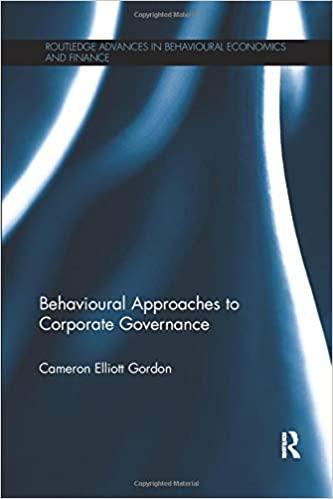1. 1: Financial Statements, Cash Flow, and Taxes: Financial Statements The focus on financial statements in finance is how managers and investors interpret and use them. A firm's annual report contains both verbal and quantitative information. The quantitative information consists of four financial statements: (1) Balance Sheet, (2) Income Statement, (3) Statement of Cash Flows, and (4) Statement of Stockholders' Equity, The balance sheet shows the firm's assets and claims against those assets. In other words, assets are equal to liabilities and equity Assets are shown in order of their re B and claims are listed in the order of when they must be paid. Current assets include cash and their equivalents, accountsB, and inventory, while long-term assets are those whose useful lives exceed one year. Liabilities are divided into and long-term debt. We differentiate between total debt and total liabilities. A company's total debt includes both es short-term and long-term Total liabilities equal Bplus the company's "free" liaties Bis the difference between current assets and current liabilities, while Blabilities is equal to Bis capital supplied by common stockholders and operating current assets (calculated as current assets minus excess cash) less the difference between current abilities and notes payable. teach represents ownership The income statement reports on operations ever a period of time. Companies operating performances can be compared by looking at nech firm's EBIT, often referred to assesti B.A typical stockholder focuses on the bottom line of the income statement, deput B. The income statement is bed to the through the retained earnings account. Net income minus Bpaid is equal to the retained earnings for the year, and this amount is added to the cumulative retained earnings from prior years to obtain the year-end retained earnings balance Management's goal is to maximize the firm's intrinsic value. The value of any esset, including a share of stock, is based on the Bavaitable to investors. The statement of cash flows shows how much the asset is expected to produce. Therefore, managers strive a firm is generating It is divided into four parts (1) Operating activities, (2) Investing to maximise the activities, (3) Financing activities, and (4) Summary Changes in stockha ers' equity during an accounting period are reported in the statement of stockholders' equity. Changes in stockholders' equity can come from new stock issues, stock repurchases, net i income, and re paid. Quantitative Problem: Rosnan Industries 2019 and 2018 balance sheets and income statements are shown below Balance Sheets 2019 2018 Assets Cash and equivalents Accounts receivable Inventories Total current essets Net plant and equipment Total assets $70 275 375 1720 2,300 $3,020 $55 300 250 $605 1,490 $7,095 Balance Sheets Assets Cash and equivalents Accounts receivable Inventories Total current assets Net plant and equipment Total assets Liabilities and Equity Accounts payable Accruals Notes payable Total current liabilities Long-term debt Common stock Retained earnings Total liabilities and equity Sales Operating costs excluding depreciation EBITDA Depreciation and amortization EBIT Interest Income Statements 2019 $70 275 375 $720 2,300 $3,020 $150 75 120 $345 450 1,225 1,000 $3,020 2019 $2,285 1,250 $1,035 100 $935 63 2018 $55 300 250 $605 1,490 $2,095 $85 50 45 $180 290 1,225 400 $2,095 2018 $1,585 1,000 $585 75 $510 46 Income Statements 2019 2018 Sales $2,285 $1,585 Operating costs excluding depreciation 1,250 1,000 EBITDA $1,035 $585 Depreciation and amortization. 100 75 EBIT $935 $510 Interest 63 46 EBT $872 $464 Taxes (25%) 218 116 Net income $654 $348 Dividends paid $54 $48 Addition to retained earnings $600 $300 Shares outstanding 100 100 Price $25.00 $22.50 WACC 10.00% The balance in the firm's cash and equivalents account is needed for operations and is not considered "excess" cash. What is Rosnan's 2019 net operating working capital (NOWC)? $ What is Rosnan's 2019 net working capital (NWC)? $









